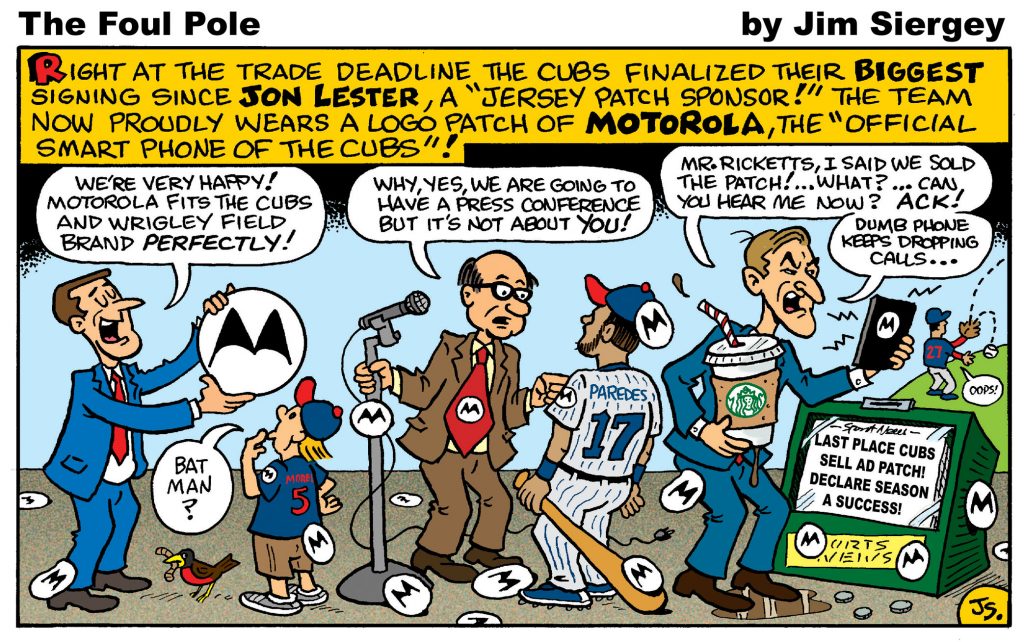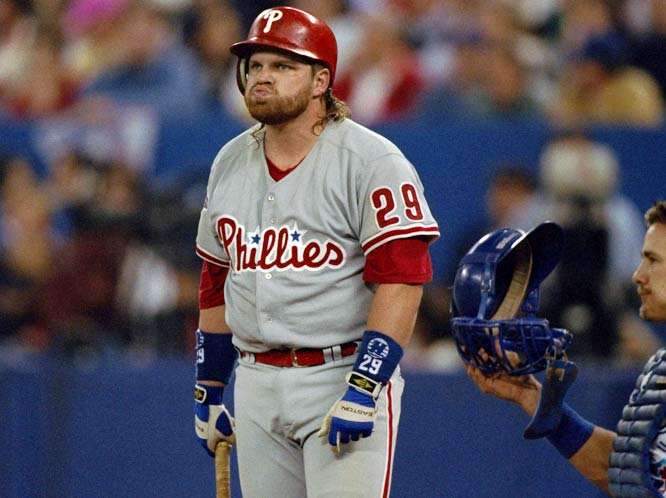by Jim Siergey

Originally appeared in The Chicago Baseball Magazine.

Originally appeared in The Chicago Baseball Magazine.
It might be …
In 1945, Harry, the great-grandpater,
Told beer-fueled stories about Cardinals like Stan the Man.
It could be …
Harry’s son, Skip, made calls straighter,
As straight as a Braves arrow off the bat of Hammerin’ Hank.
It is!
Skip’s boy is a charismatic Chip off the old block.
First with Gramps and the Cubs; then Dad and the Braves; and now the Cards.
A home run!!
In 2024, Chris joined the Caray MLB broadcast stock.
A’s fans hear echoes in this descendant of baseball’s royal family of bards.
Holy Cow!!!
These joyful announcers hit an inside-the-ballpark family-four-bagger.
Calling games for the A’s, Cards, Cubs, Braves, and Sox with swagger.
Take Me Out to the Ball Game!!!!
Four generations talkin’ baseball lore.
Harry Christopher Caray: I, II, III, IV.


Two weeks of contests in Paris
Of every conceivable style
Athletes honed like hardened steel
Ladecky, Tebogo, Yee, Li, Biles
What focus and determination
To swim, box, dive, run, throw
Pushing their mental endurance
And how far their bodies can go
They remind me of what John Kruk
Once told a hotel lobby hater.
He said, “Lady, I ain’t an athlete–
I’m a baseball player.”

. Eddie found a rubber ball and begun throwing it off the side of the house and catching it on the rebound. To sharpen his reflexes.
. His grandmother put a stop to that. “No throwing the ball off the side of the house!”
. “But it is a rubber ball,” Eddie protested.
. “I don’t care! I said don’t throw the ball off the house!”
. Nincompoop!
. Eddie begun going to the sand and gravel pit on the other side of Howling Avenue. He threw rocks at the telephone poles to strengthen his arm.
. Down in the cellar of the house he daily took 50 swings with a baseball bat, sometimes more.
. Occasionally he was able to talk his younger brother into a game of catch in the driveway. A game that never lasted long, as his brother complained loudly that Eddie threw the ball too hard.
. On rainy days Eddie read the books about baseball he checked out of the public library. He read about Ty Cobb, Babe Ruth, George Sisler, Shoeless Joe, Joltin’ Joe, Hammerin’ Hank, The Say-Hey Kid; he studied the backs of the baseball cards he bought at the store for five cents a pack—five cards and a slab of pink bubblegum. He memorized statistics of the players.
. He went to the field to try out for the Little League and was picked by the AFL-CIO, and given a gray and red uniform and cap with “A.F. of L.” printed on it.
. He had found a pair of his older brother’s baseball cleats in the cellar and had stuffed the shoe toes with newspaper so they fit.
. He rode his bicycle to the field for his first game. The bike a low-riding 28-inch with high handlebars and banana-shaped seat with fake leopard-skin cover. A two-mile ride, the last stretch through The Blocks, a part of town inhabited by troublemakers, hoods, who wore black jackets with silver chains.
. Eddie got into the game in the last inning—as a pinch runner.
. Jimmy Larson had started at third base, Eddie’s position. Eddie knew he could hit better, field better, and throw better than Jimmy, but Jimmy was the coach’s son.
. Eddie played two innings the next game. Got a hit in one at-bat. A single up the middle. He replayed the hit over and over in his mind before he went to sleep that night.
. He put a baseball in the pocket of his glove and tightly wrapped the glove with twine and let it sit overnight—to form a pocket.
. In the mornings Eddie read the Major League box scores and studied the most recent League standings. While watching television at night he squeezed his rubber ball to strengthen his fingers and wrists.
. He hit his first home run in his second game. A high fly ball to center that landed in the arms of a weeping willow tree behind the center field fence. So excited, running the bases, he nearly failed to touch second.
. He knew there was no way Coach Larson could keep him on the bench. Not when he was hitting .500!
. One game day Eddie decided, on a whim, to ride his older brother’s hand-me-down 3-speed bicycle instead of his own. The bike was a heavy chrome monster nearly tall as Eddie. He had to step on a pedal to mount the seat.
. In The Blocks that day, a tall thin rat-faced boy ran out of an alley screaming at Eddie. Screaming Eddie’s last name. The boy made a lunge for the handlebars. Eddie made a sharp turn from sidewalk to road. The rat-faced boy, whose greasy long hair was plastered to his skull like a shower cap, gave chase.
. Eddie pumped the pedals with all his strength. The rat-faced boy gained ground, his sneakers slapping the highway with each step. Eddie shifted to 2nd, then to 3rd; he felt a new surge of speed. The boy reached for the back fender. Eddie pumped while standing nearly straight. The slap of sneakers ceased. The boy grew smaller in Eddie’s sight. Eddie coasted into sunlight at the end of The Blocks.
. Who was the boy? Eddie wondered. How did the boy know his, Eddie’s, name? Would the boy be waiting in the alley on Eddie’s return home?
. The hard-hit ground ball skipping toward him was a surprise. The ball ran under his glove and out into left field. Eddie heard mocking laughter from a dugout. He felt shame. He hung his head so the visor of the cap covered his face. He scratched the infield dirt with the toe of his cleat.
. In his three at-bats, he struck-out, popped-up and hit into a double play. After the game he rode home the long way around town—an extra 15 minutes to reach his house. Mean dogs were along the way but by keeping to the middle of the broad streets whenever able he avoided the dogs.
. Over the next few months of games Eddie hit .350 and added another three home runs. He was selected to play on the League’s All-Star team. He was given a special All-Star cap, red with white star. In the picture of the team, published in the newspaper, he knelt in the front row, third from left.
. During those few months he had always taken the long way to and from the field. On the day of the All-Star game he was running late and had to go through The Blocks to be at the game on time.
. The rat-faced boy was waiting in the alley. He gave chase as Eddie sped along on his 28-inch bike. Eddie zigzagged along the cracked and rutted sidewalk, barely staying out of the boy’s grasp.
. Three dirty-faced urchins squatted around a dead cat in the middle of the sidewalk, poking it with sticks. As Eddie turned to avoid them his handlebar hit the parking meter and he went down face first in the thin strip of median scrub-grass. The rat-faced boy was on him like a cat on a mouse. Eddie stood; the boy rained punches on Eddie. Eddie dodged and moved but kept getting hit. He did not know how to fist fight, he realized. He dove for the boy’s legs, pulling him to the ground in a tackle.
. The urchins hopped up and down urging Eddie and the boy to kill each other.
. The boy was quick and fast. Wiry but strong. Not as strong as Eddie though, who put the boy into a headlock and squeezed. The boy gasped for breath; he began to choke. “You give?” Eddie asked. The boy nodded assent. Eddie let him go and stood. The boy stood too, holding his throat. He punched Eddie in the face.
. Eddie charged, enraged, fists flying.
. The urchins shouted delightedly, sensing a new urgency to the fight.
. Eddie ran into a barrage of punches. He fought his way through, took hold and held the boy in a standing headlock. The boy weaseled his way out of the hold. Eddie held the boy by the neck of his t-shirt and flung him, like a sack, into the tenement wall. The boy’s head made a loud thump on the bricks. He fell to the sidewalk and curled into the fetal position while cradling his head.
. The urchins stared at Eddie admiringly. He jumped onto his bike and sped off, reminding himself that he was an All-Star, and vowing to stay one, forever and ever.